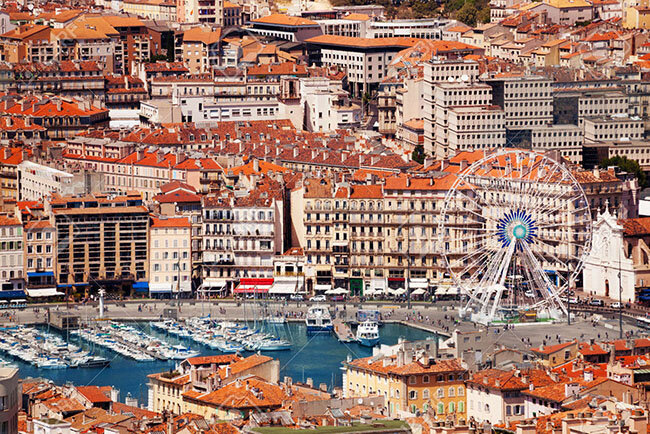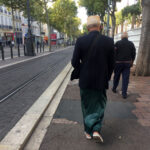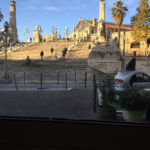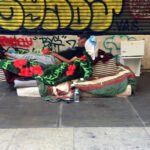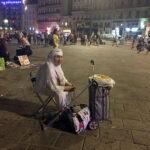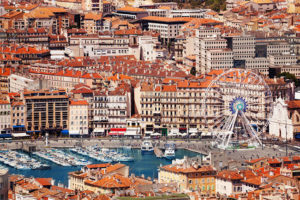Jenine Abboushi
In downtown Marseille, one cannot walk down the same street twice. If you make your way along La Canebière, once an elegant boulevard, now still the main thoroughfare, though populaire since the 1960s, every kind of person and jamboree passes by. They are French or new arrivals, originating from all over the Mediterranean, West Asia, and Africa, mainly working class, but many from diverse social milieux. Unlike Marseille’s more homogenous neighborhoods—the poor quartiers nord, and the rich neighborhoods to the south and along the Corniche—this city is bejeweled with one of the last remaining centers in Europe that holds multitudes. Everyone gets to be here. La Canebière is lively and fascinating all day and even past midnight towards the Vieux Port, bewitching curious people who themselves tend to contain multitudes (as Whitman wrote and Dylan sings).
Walking down La Canebière is a new experience each time, with such unexpected incidents and happenings, scenes and comportment, outfits, hairstyles, languages, music, odors, and signs. It all unintentionally forms a performance space of sorts, like a French Jemaa el-Fna, if it were not for the grand, neglected buildings, that particular light and briny balm streaming upwind from the Mediterranean Sea, or its Vieux Port and blanched sails.
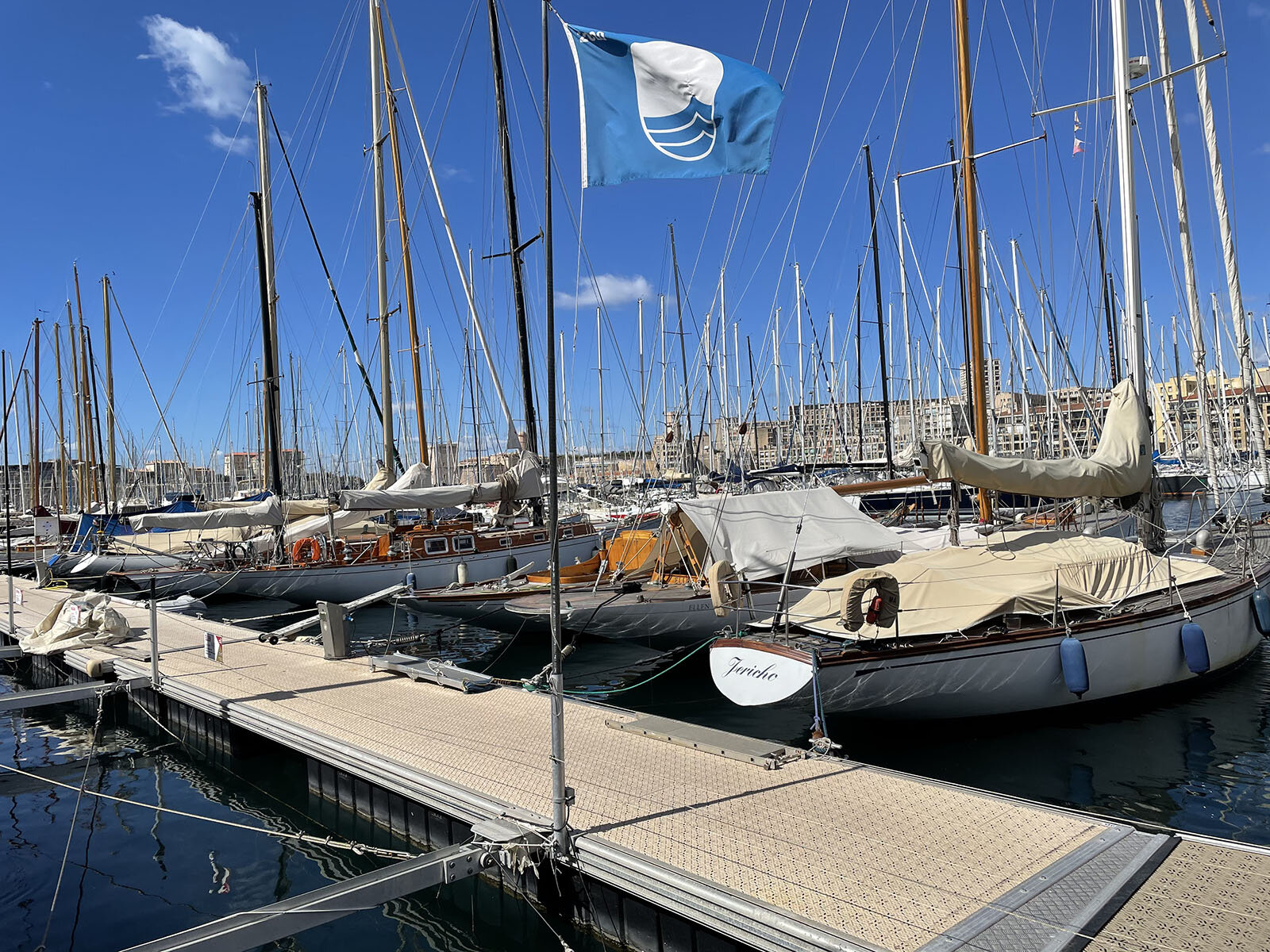
Walk down La Canebière then. If attuned and a traveler (even at 100 meters from your home), this experience can be participatory. For me, La Canebière is teeming — not simply with all that I actually encounter on my promenade, but also all that these encounters inspire me to recall from other times I wandered through this artery and its branches. Seemingly insignificant scenes or anonymous people can take me, in turn, elsewhere, to other lives. These visions (actual and remembered) coexist and mingle by Marseille’s edgy diversity. It is a downtown that allows for improvisation, simultaneous lives, for places and people to peek through from the distances of time and recollection. Such engagements with other times and places — meaningful, sometimes baffling or emotive — exist in private thoughts, forming a separate awareness. Yet in walking down La Canebière, I have come to recognize and respect how utterly human is this habit of thought and experience, this manner of conscious interaction with tangible and social worlds, achieved through practice or temperament. Homogenous human gatherings, choreographed movement (of people and vehicles), uniform architecture and structured urban space, which can be coherent and pleasant to the eye, do not allow diverse people to fully exist and coexist. You can remain on the curb looking on, as if at a postcard, and as if you are not quite there, not yet part of the world around you.
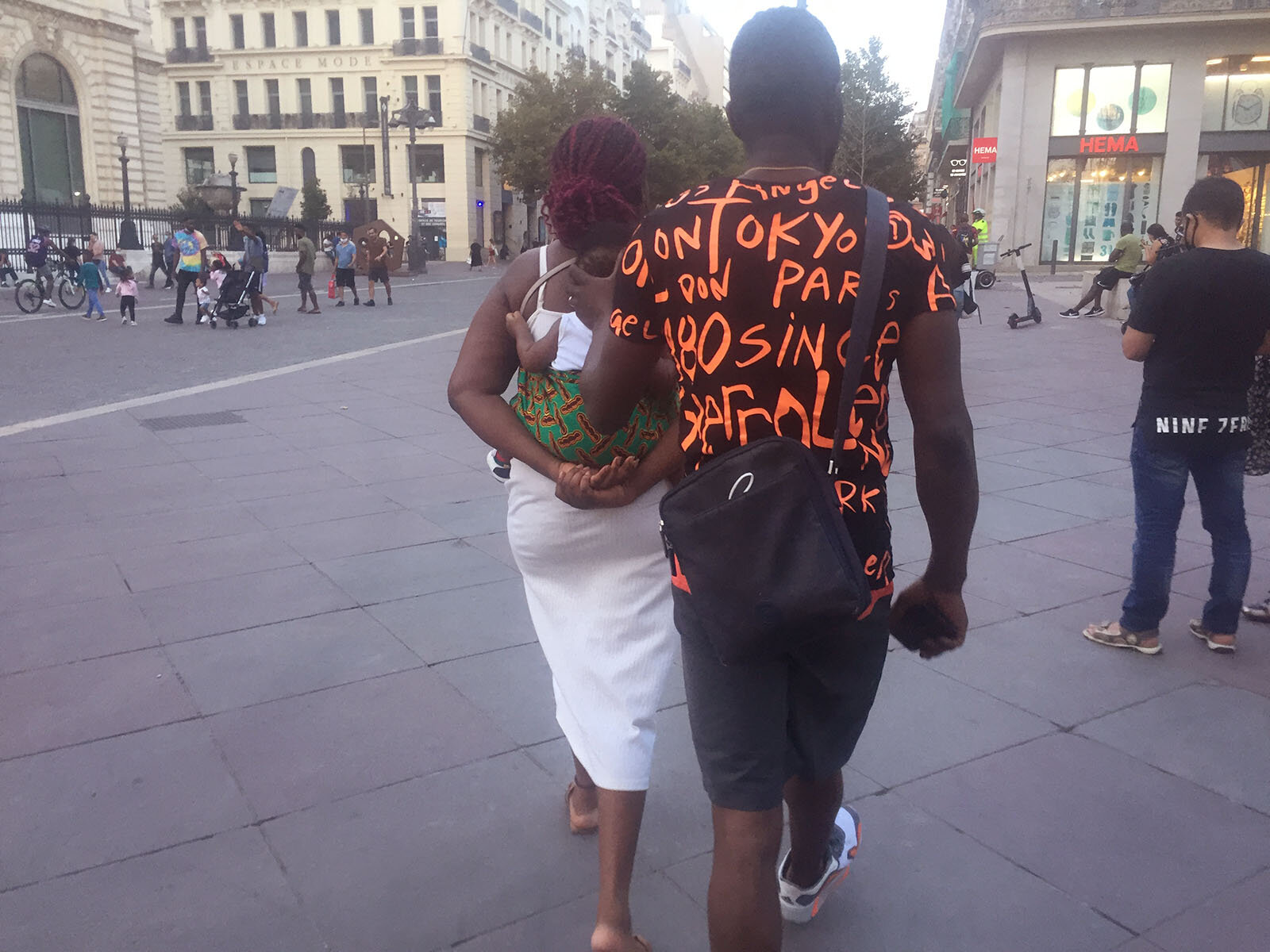
Travel down La Canebière body and soul. Perceptively, carnally, lay your life and worlds open, like books and photographs strewn across a desk. You can, like I do, let your thoughts, here and there, wander naturally with the movement of your body and the street. All seems partial, digressive, and by the way. If you are observant and reflective, flash recollections will more readily come to mind and transform your experience.
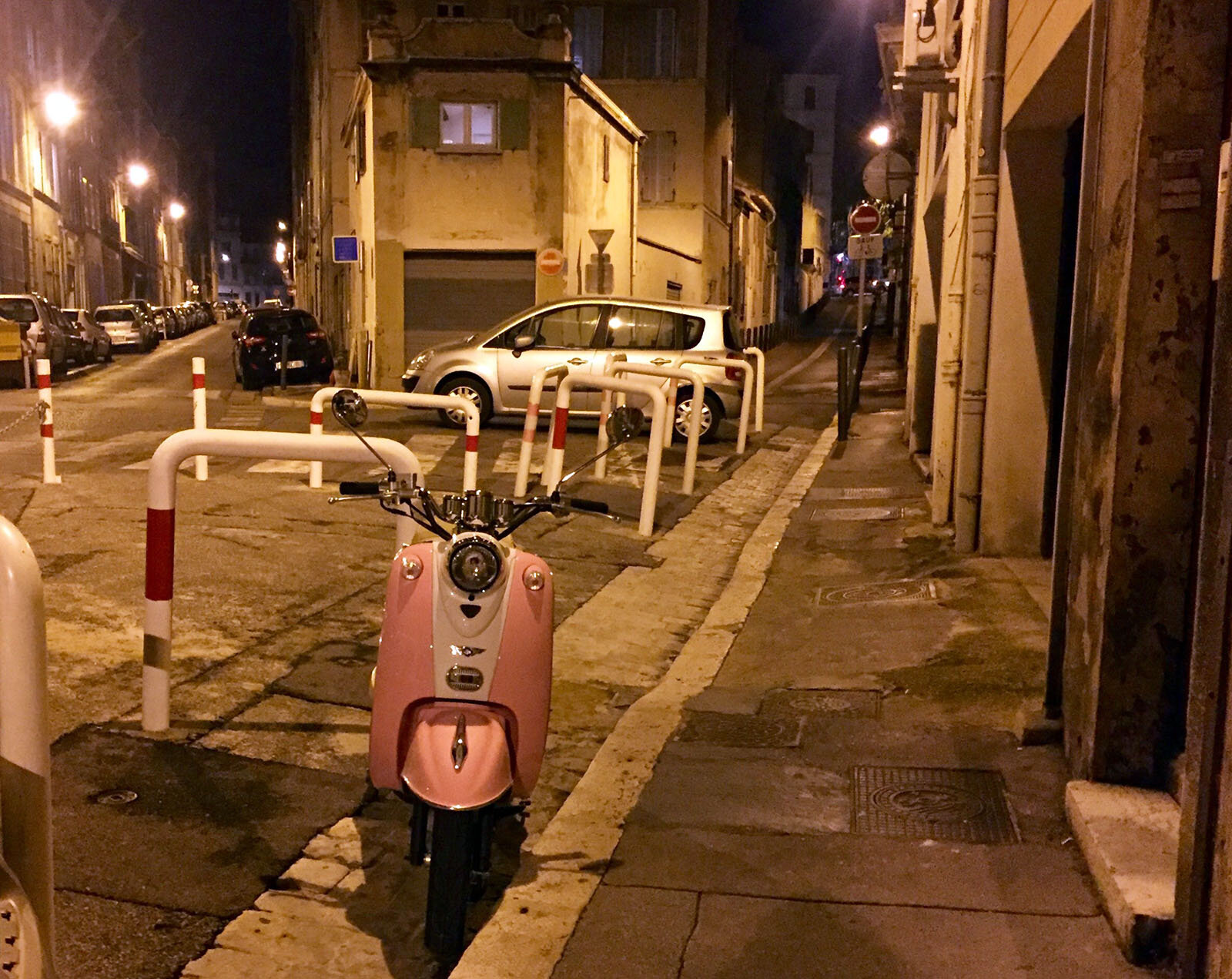
I head towards the sea from Rue Consolat. At the top of La Canebière, at the seedy terrasse of Bar du Chapitre, next to the fountain of the Danaïdes, I step over the spot that held a table of six friends drinking and smoking weed, and where I sat with a Syrian poet and Arabic teacher to discuss the possibility of lessons for my teenage son. Suddenly a woman with a blond ponytail stood up to crash an empty bottle over the head of a man at her table. The bottle shattered without visibly cutting him, and he got up to holler. Everyone stood up and moved back, at least temporarily, and we left. As we walked away on my first night in Marseille after moving here, the poet said that he had never seen anything like that here. I’ve also never witnessed anything like that since.
I cross the street at Stalingrad Square. Just before crossing La Canebière, I glance down Allée Léon Gambetta to catch a quick glimpse of the unemployed men drinking coffee together in circle formations, recalling the Roma women and girls in long braids and blooming skirts, laughing and talking, mothers’ hands placed on their daughters’ shoulders. I can see the front of Gallery Fotokino where I had coffee with my first friend in Marseille, who invited me to her home to dine that same day.
For an instant, I almost veered off La Canebière down Gambetta, figuring I could rejoin La Canebière at the corner of Boulevard Dugommier. That way I can glance to the right up Boulevard d’Athènes and see the majestic stone staircase leading up to the train station, just across from one of my “offices,” when cafes were still open, L’Écomotive. Or I could turn down Tapis-Vert street to pass by the historic Église de la Mission de France Saint Pie X that I once visited with an architect friend while on a Sunday walk. Inside the church that morning, we saw a congregation as if from another era. An older woman with a thick, black-crocheted scarf laid over her head sat with her husband, and we thought her touching, imagining someone had recently died. As we made our way out the door, we witnessed a prim mother in a large car swiftly pull up to the church door to drop off her five daughters. They all were dressed in fine pleated skirts, white blouses, and patented-leather shoes, and wore shiny, tight braids. They poured into the church as their mother drove off to find a parking space. We continued on, and my friend showed me the stunning top half of another historic church, now covered by a storefront built in front of it. I had never noticed it.
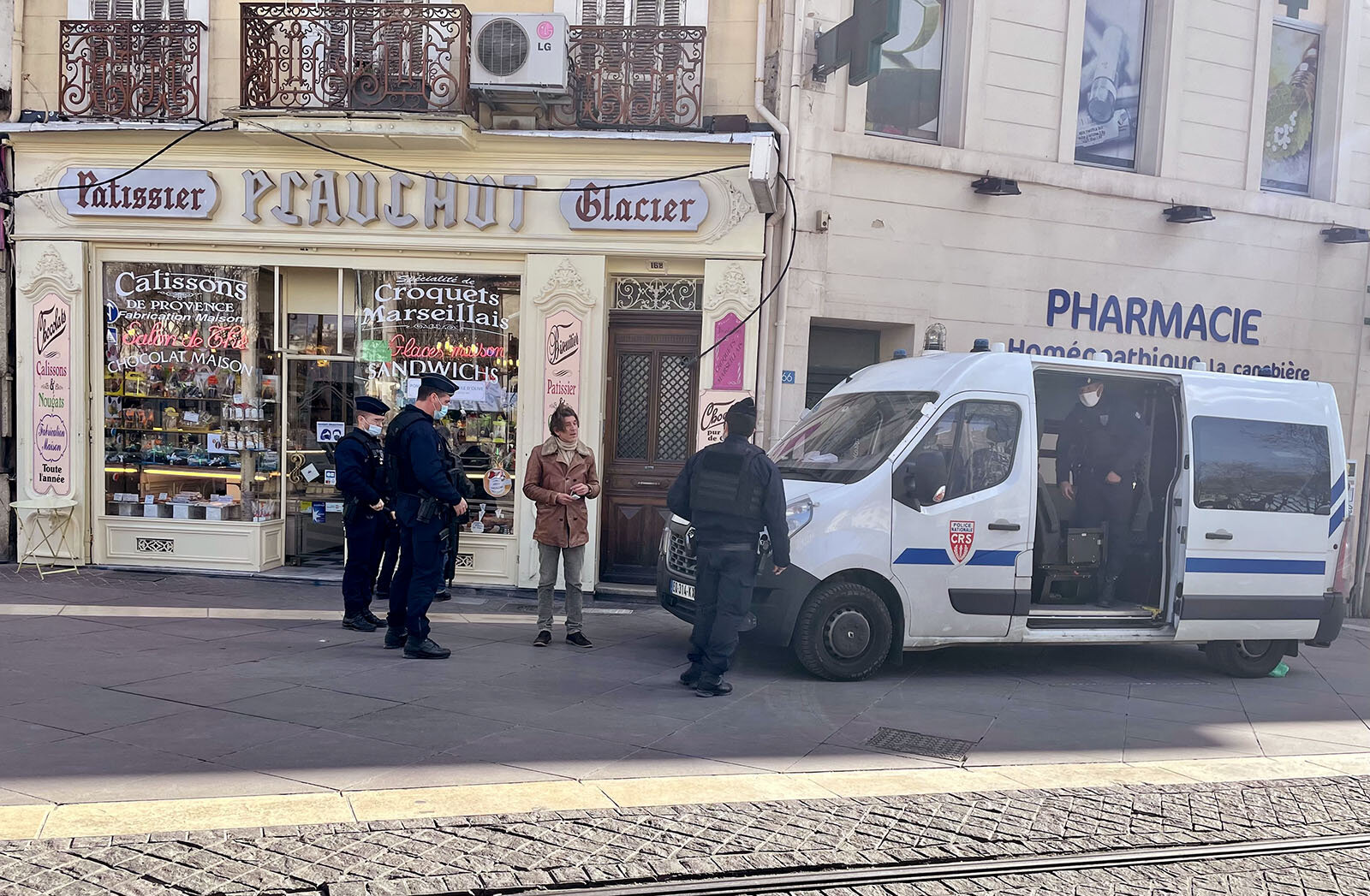
I popped into the same church a few days later on the way home from an afternoon of writing in Alcazar Library, and a smaller congregation was receiving the priest’s words. I sat briefly on a bench, and noticed a much younger woman with the same hand-knit black piece laid over her long hair, and wondered if she and the older woman from that Sunday were part of a fundamentalist group. She was pale, melancholic-looking, and unexpectedly took me back, in my thoughts, to the Wailing Wall in Jerusalem, where I had wandered with my children after they visited the Dome of the Rock. We were surprised to be let in unquestioningly. We decided to tour underground, where guides explained in many languages to visitors about the sandy, dark, empty tunnels and the massive blocks of stone that formed the back wall. Our guide alarmingly suggested that the wall before us, declared the foundation of the Second Temple, would one day be free of the mosque above ground. On the way out, we passed a pale teen with long hair, standing alone in a back corner. For an instant, the children and I looked at her in awe as she pressed her cheek in anguish against an enormous stone block.
Allowing these thoughts to drift through my mind, I decide to continue along La Canebière, glancing briefly over to Patisserie Plauchut’s comely, gaudy display. I miss seeing the darkened murals in the back parlor when I would frequently buy tartes or snacks for my son. And the sweets and paintings are blocked from my consciousness by the sight, from just two weeks ago, of two policemen conversing out front, one with his mask pulled down to his chin to smoke a fat cigar. This sight turned my head all the way around. I advanced a few more steps, looked back, and saw they had just flagged down a passerby with no mask on him. Searching for the cigar, I spied it still in the policeman’s hand, but tucked behind his back for the occasion. Stepping briefly onto the tram rails, I quickly snapped a photo. The policemen had turned away from the street and towards the chagrinned man contesting the 135 euro fine they may have imposed on him.
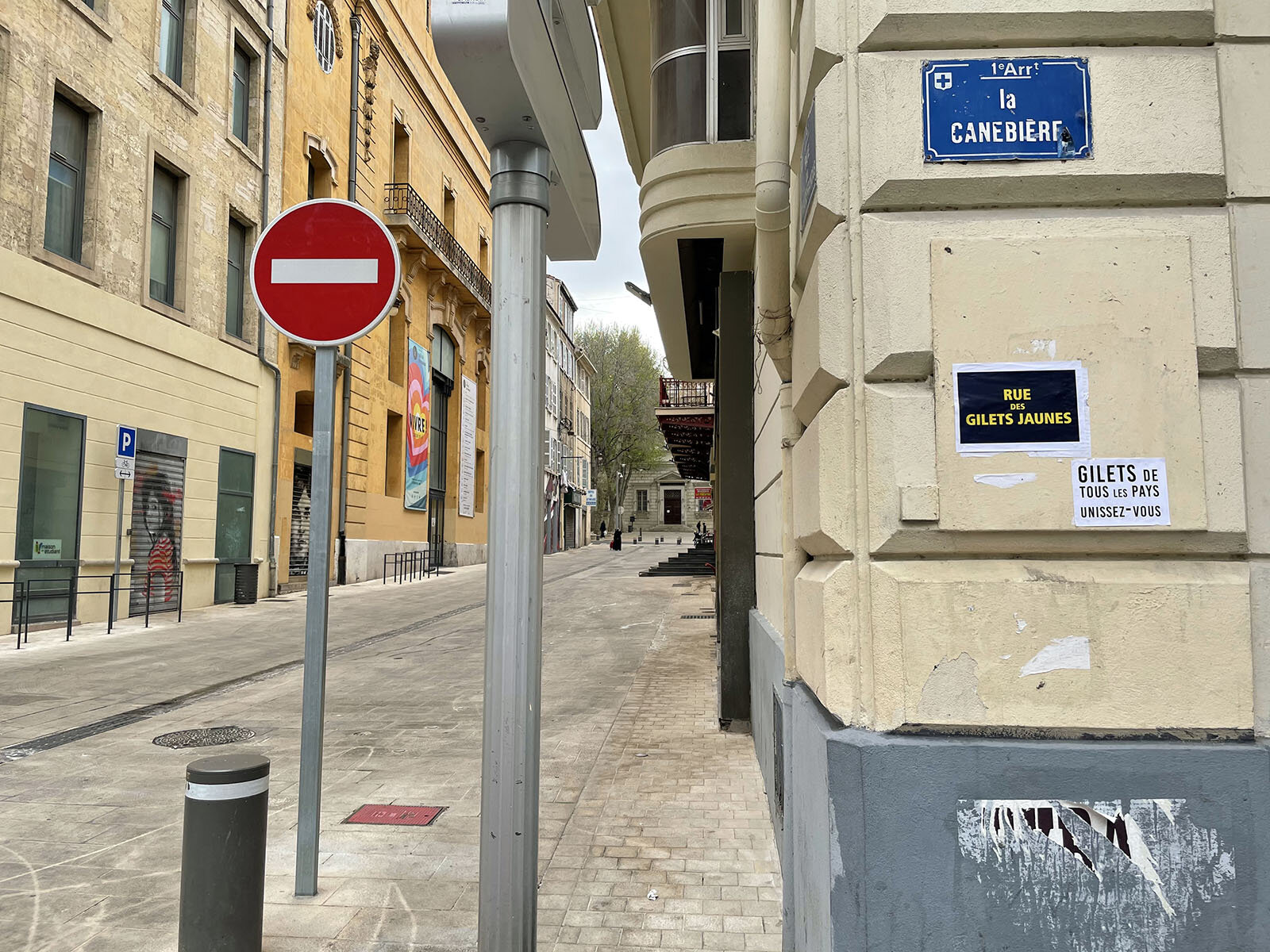
The weather is warm, balmy, a relief from the cool mistral winds that swirled boisterously around us in the past few days. Even if walking fairly quickly, the street scene evokes brief glimpses, in the imagination, of the scenes and people I noticed in the past weeks and months in downtown Marseille. On the corner of Boulevard Dugommier, there was the bearded man with long black pig-tails and a pink tutu dancing in front of traffic. I have not seen such random, street spectacles since my graduate student days in Manhattan, before it became expensive and homogenized. There ahead of me I remember the exotic man I picked out by his rapid, mechanical gait and stuffy, power suit. His white socks drew my attention, shining in the sunlight from under incongruently short trousers. He had stopped in front of the majestic Sociéte Générale bank up ahead, now rather disreputable, apparently. They had long washed off the “voleurs” (thieves) graffiti from their glass front. I took a photo of him, but since it did not represent his remarkable gait it was a dud.
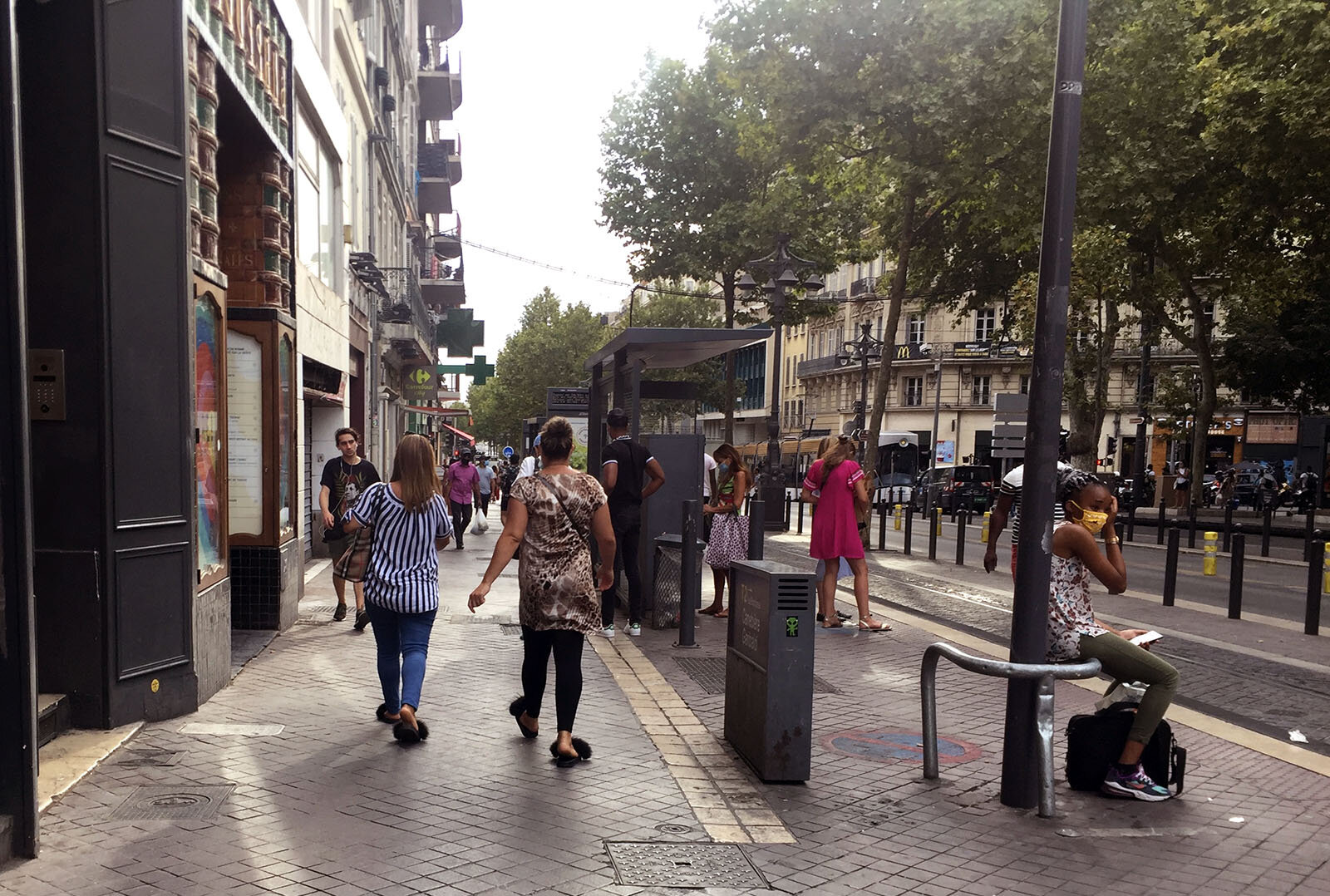
For a few months last winter, I liked to notice women in fashionable bedroom slippers with pom-poms of different colors that I saw in store windows on Rue de Rome. I had learned from living in Morocco how unique, affordable fashion styles are often created in poor but strong societies that are in fact not designer knock-offs. Most young Maghrebi and African men downtown wear sweatpants and trainers not as alternative fashion, but more as a cache-misère, a way to dress more inexpensively than one can in jeans or pants.
Seeing people queued up in front of the Commissariat at the Noailles Metro station flashed me back to scenes from my four-hour wait last July to declare my 16-year-old son missing. He had taken a train to visit a friend I had not met, staying in a village with her family outside of Frankfurt. They went on day trips and he had a marvelous time, he later reported. He was in touch with his sister in NY, but would not tell us where he was. The police officer I talked to called my son’s number, as I had many times, but from their trans-European phone system an automatic message blared in German. “C’est pas bon ça,” I remarked dryly to the officer. During my wait, I watched a man and woman exit the station, halt on the street island, tramlines crossing on either side, and argue in sign language.
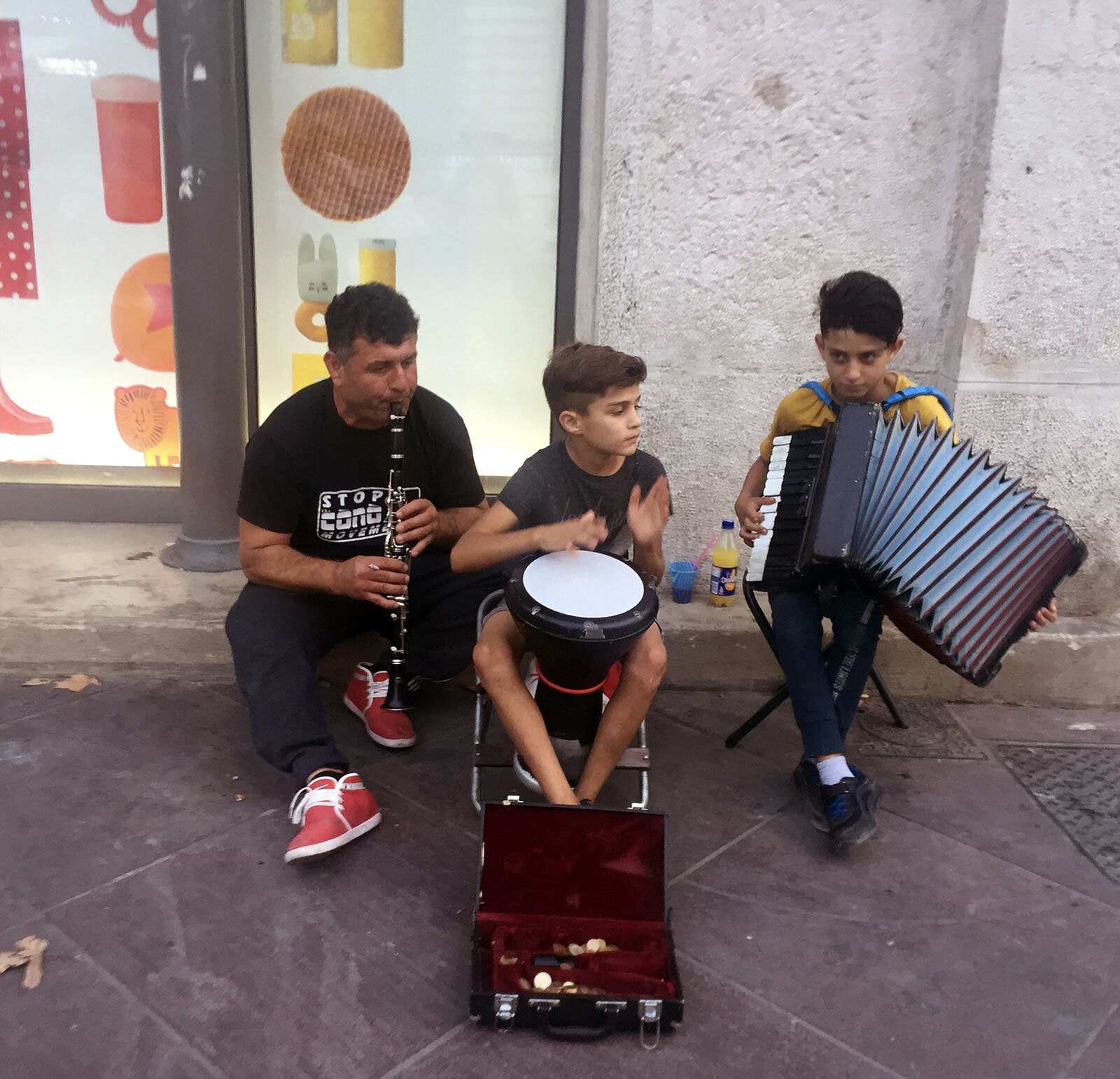
I continue down towards Noailles market, with voices and music sounding contrapuntally all the way down La Canebière. Only fragments surge in clarity: a woman saying over and again, loudly in Arabic on her phone, “Tu m’écoutes? Khala3ni!” (Do you hear me? He frightened me!), or the père et fils trio playing a derbakeh, accordian and clarinette near Hema store, making me feel like shaking hips. I always glance over to the majestic Maison Empereur founded in 1827, which it took me some time to discover after I moved to Marseille (“but what if I don’t want to visit a hardware store?”). Without going in, I can see the blocks of dark green olive soap piled high, the enormous one I once bought for my daughter and her boyfriend, and the scented bars on rope, all arranged on the wall near the stairwell, which I mount, in my mind’s eye, to browse the linens and dishes and little antique toys.
By the time I arrive at the Bourse, that liquid sea light fills our world. I feel elated each time I near the congregation of masts, the sea and sky beyond the port opening between Jardin du Pharo and Fort Saint Jean. I turn to the Merry-go-round as I pass it, and recall the haircut party planted there for a time during quarantine, with several stools set up to make fanciful dos for willing victims. I arrive at the edge of the port where I cannot walk further, and where every morning the fishermen and women sell interesting sea creatures from light blue and white tables. I remember a poor octopus that kept climbing off one table. I bought eels last Saturday, not knowing I should select a big one to avoid tiny bones. The gnarly fisherman put bloody change in my palm. I assumed it was from cutting up the eel, but he corrected me, matter-of-factly remarking that he had cut himself earlier. I slipped the change into a plastic bag and soon after cleaned my hands with sanitizer.
In downtown Marseille all the strange and memorable sights you take in remain present, for the taking by your imagination, each time you explore the area. Marseille has a rugged texture, colorful, elating, forging a place for diverse people and worlds. Many seem to be strangers in a strange land, who may paradoxically find a place in this unruly space. I move to the front side of the port, now knowing to sit down, letting my legs dangle above the water. The whole world radically changes when you sit down on the edge and look out to the port and boats and sea, as opposed to standing or walking around. You will soon ask yourself why you do not come sit here to relax at the end of every day? It’s so pleasant and simple and instantly calming. You feel content, pulled together by primordial sources, older than the Vieux Port itself: the hum of voices around you, the warmth of bodies around you, the sea scent and sunset.



